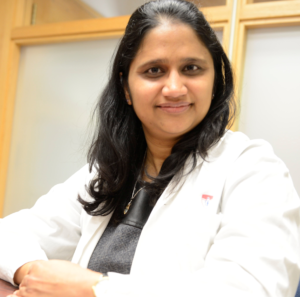 Although much progress has been made in tackling HIV, in 2015 there were over 36 million people living with HIV, and over 2 million people become newly infected with HIV each year.
Although much progress has been made in tackling HIV, in 2015 there were over 36 million people living with HIV, and over 2 million people become newly infected with HIV each year.
But the ambition to end HIV is strong. Two years ago UNAIDS announced its 90-90-90 initiative. By 2020, 90% of all people living with HIV will know their HIV status. By 2020, 90% of all people with diagnosed HIV infection will receive sustained antiretroviral therapy (ART), and 90% of all people receiving ART will have viral suppression.
A recent analysis of HIV care cascades from 69 countries showed that no country analyzed met the 90-90-90 targets. Diagnosis was the greatest break point globally, but the most frequent key break point for individual countries was providing ART to those diagnosed with HIV.
A diagnosis of HIV today is not a death sentence. There are very good diagnostic tools and effective antiretroviral treatments available. Despite these tools, about 40% of individuals living with HIV do not know that they are infected. This has to change. Stigma, long waiting times in clinics, perceived discrimination, and marginalization prevent people from coming forward to test in health facilities. In this context, HIV self-testing offers an innovative solution.
HIV self-testing is a process in which a person collects his or her own specimen (oral fluid or blood) and then performs an HIV test and interprets the result, often in a private setting, either alone or with someone he or she trusts. Results are usually ready within 20 minutes or less, and there are several home tests available. It is important to note that individuals with positive results on the self-test need to seek confirmatory tests at health centers. A home test alone is not sufficient to confirm HIV.
Research shows that HIV self-testing is feasible, accurate, acceptable to people, and successful in increasing the uptake of testing. Self-testing more than doubles uptake of HIV testing among men who have sex with men and male partners of pregnant or postpartum women. It also increases uptake of couples HIV testing among male partners of pregnant or postpartum women. Self-testing does not increase HIV risk behaviors or the number of bacterial sexually transmitted infections. There is no evidence of an increase in reported social harm, adverse events, or behaviors.
Last week the World Health Organization (WHO) released guidelines and recommendations in support of self-testing. I had the privilege to contribute to this guideline. WHO now recommends that HIV self-testing should be offered as an additional approach to HIV testing services. With this WHO policy, I hope that health ministries in countries deeply impacted by the epidemic will work to accommodate self-testing within their health systems, and make sure that HIV home tests are easily accessible.
However, testing alone is not sufficient to end the HIV epidemic. Linking patients to adequate antiretroviral treatment is an important next step. Many countries impacted by HIV struggle with rapid and timely initiation of ART and subsequent retention of patients in care. Innovative technologies and strategies can help overcome such gaps in service delivery.
Without diagnosis, medicine is blind. To end the HIV epidemic we need people with HIV to be diagnosed, and many more people to know their HIV sero-status, as per their choice, pace, and preference. This requires a patient oriented testing strategy—one that is convenient, private, patient-centric, adaptable, and amenable to integration within existing programs of care. Such a strategy will have far greater success than trying to fit patients into the current testing programs that have failed to engage and diagnose people with HIV. As Dr Margaret Chan, the director general of WHO put it, “HIV self-testing should open the door for many more people to know their HIV status and find out how to get treatment and access prevention services.”
I am excited about the new WHO policy on HIV self-testing and would like to see the policy implemented on the ground, especially in countries devastated by the AIDS epidemic. I also hope that WHO’s self-testing guidelines will help catalyze the much needed change in policy and practice. Inspired by these guidelines for low and middle income countries, some high income countries that have yet to approve HIV self-tests may now also rethink expedited approvals, and may issue directives on HIV self-testing.
An ideal implementation of an HIV self-testing strategy will require a paradigm shift in thinking at the systems level. Many stakeholders are vested in old HIV testing strategies. Many may need to rethink integration of or an offer of an HIV self-testing strategy. Many will need to accommodate their patient’s requests for frequent self-testing, affordable self-testing, or self-testing in conjunction with pre-exposure prophylaxis or medical circumcision.
I am pleased to see Canada’s leadership in the fight against HIV, TB, and malaria, and I am very enthusiastic about the potential of using mobile phones, apps, and innovative strategies that reach patients and help harness the true potential of HIV self-testing. With innovation, strong partnerships, and continued funding commitment, we can end the AIDS epidemic for good.
Nitika Pant Pai is an associate professor of medicine at McGill University, Montreal, and a researcher at the Research Institute of McGill University Health Centre. She has developed integrated HIV self-testing strategies for South Africa, India, and Canada. (Twitter @Nikkipantpai).
Competing interests: I developed an app that guides users through self-testing for HIV, which has been tested in South Africa and Canada.
This blog was first published on the Huffington Post’s website.
